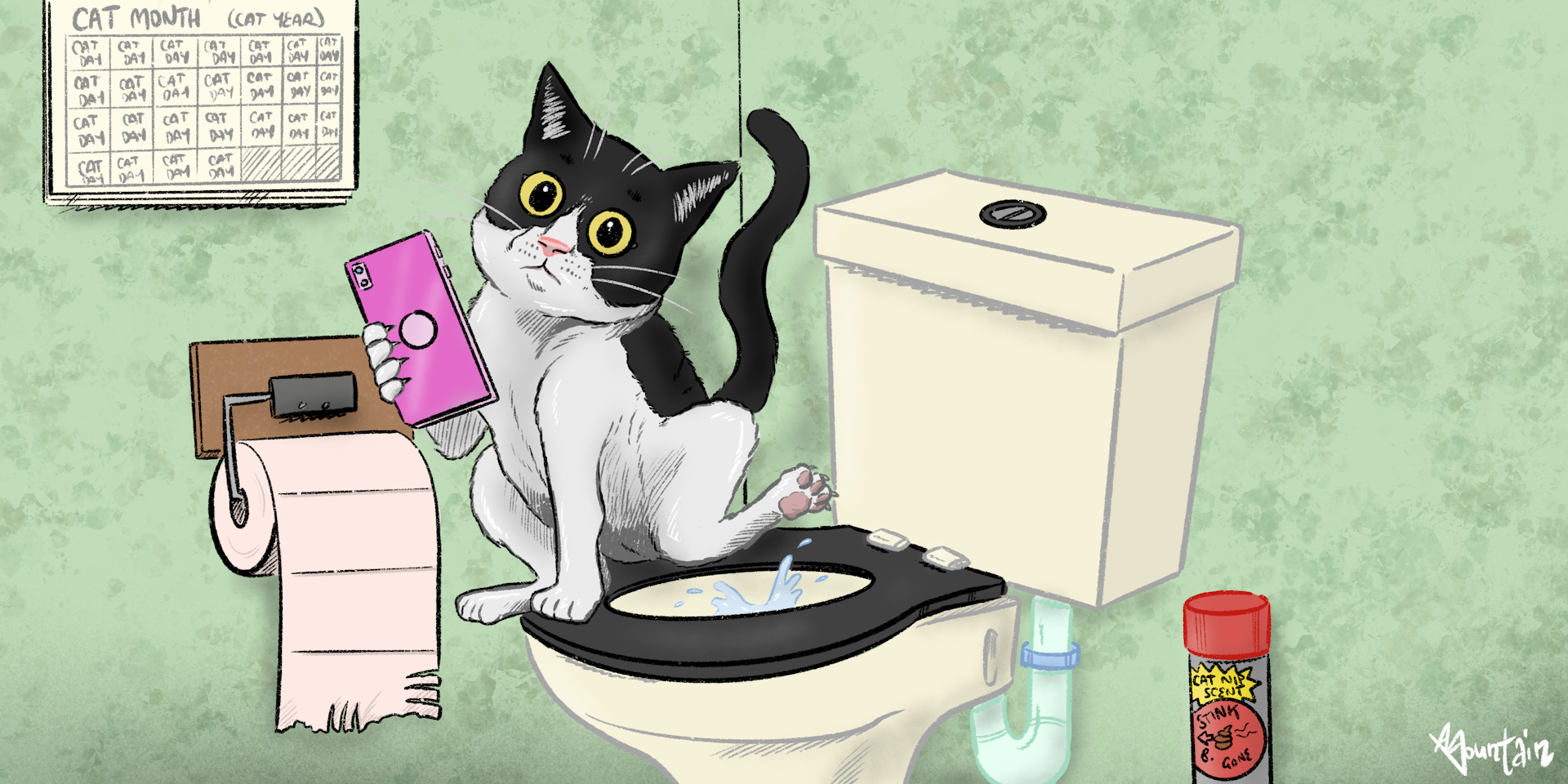Avoid Flush Cat Poop Down Your Toilet - Protect Your Plumbing Infrastructure
Avoid Flush Cat Poop Down Your Toilet - Protect Your Plumbing Infrastructure
Blog Article
The article author is making a number of good pointers about Can You Flush Cat Poo or Litter Down the Toilet? in general in this great article followed below.

Introduction
As cat owners, it's necessary to be mindful of exactly how we dispose of our feline good friends' waste. While it might appear hassle-free to purge feline poop down the commode, this method can have harmful repercussions for both the setting and human health.
Ecological Impact
Flushing feline poop introduces hazardous pathogens and bloodsuckers right into the water system, positioning a substantial risk to marine communities. These contaminants can adversely influence aquatic life and concession water quality.
Health and wellness Risks
In addition to ecological issues, flushing pet cat waste can likewise position health dangers to people. Feline feces might include Toxoplasma gondii, a parasite that can cause toxoplasmosis-- a potentially extreme health problem, particularly for expectant women and people with damaged immune systems.
Alternatives to Flushing
The good news is, there are more secure and a lot more responsible means to take care of pet cat poop. Consider the complying with options:
1. Scoop and Dispose in Trash
The most typical technique of dealing with feline poop is to scoop it into a biodegradable bag and toss it in the trash. Make sure to make use of a committed clutter scoop and take care of the waste quickly.
2. Usage Biodegradable Litter
Select biodegradable feline litter made from materials such as corn or wheat. These trashes are environmentally friendly and can be securely thrown away in the garbage.
3. Hide in the Yard
If you have a yard, think about hiding pet cat waste in an assigned location far from veggie gardens and water sources. Be sure to dig deep adequate to stop contamination of groundwater.
4. Set Up a Pet Waste Disposal System
Purchase an animal garbage disposal system particularly developed for cat waste. These systems make use of enzymes to break down the waste, lowering smell and environmental effect.
Final thought
Accountable animal ownership prolongs beyond offering food and shelter-- it additionally includes proper waste monitoring. By avoiding purging feline poop down the bathroom and choosing different disposal methods, we can minimize our environmental footprint and shield human health.
Why Can’t I Flush Cat Poop?
It Spreads a Parasite
Cats are frequently infected with a parasite called toxoplasma gondii. The parasite causes an infection called toxoplasmosis. It is usually harmless to cats. The parasite only uses cat poop as a host for its eggs. Otherwise, the cat’s immune system usually keeps the infection at low enough levels to maintain its own health. But it does not stop the develop of eggs. These eggs are tiny and surprisingly tough. They may survive for a year before they begin to grow. But that’s the problem.
Our wastewater system is not designed to deal with toxoplasmosis eggs. Instead, most eggs will flush from your toilet into sewers and wastewater management plants. After the sewage is treated for many other harmful things in it, it is typically released into local rivers, lakes, or oceans. Here, the toxoplasmosis eggs can find new hosts, including starfish, crabs, otters, and many other wildlife. For many, this is a significant risk to their health. Toxoplasmosis can also end up infecting water sources that are important for agriculture, which means our deer, pigs, and sheep can get infected too.
Is There Risk to Humans?
There can be a risk to human life from flushing cat poop down the toilet. If you do so, the parasites from your cat’s poop can end up in shellfish, game animals, or livestock. If this meat is then served raw or undercooked, the people who eat it can get sick.
In fact, according to the CDC, 40 million people in the United States are infected with toxoplasma gondii. They get it from exposure to infected seafood, or from some kind of cat poop contamination, like drinking from a stream that is contaminated or touching anything that has come into contact with cat poop. That includes just cleaning a cat litter box.
Most people who get infected with these parasites will not develop any symptoms. However, for pregnant women or for those with compromised immune systems, the parasite can cause severe health problems.
How to Handle Cat Poop
The best way to handle cat poop is actually to clean the box more often. The eggs that the parasite sheds will not become active until one to five days after the cat poops. That means that if you clean daily, you’re much less likely to come into direct contact with infectious eggs.
That said, always dispose of cat poop in the garbage and not down the toilet. Wash your hands before and after you clean the litter box, and bring the bag of poop right outside to your garbage bins.
https://trenchlesssolutionsusa.com/why-cant-i-flush-cat-poop/

I was introduced to that report about How to Dispose of Cat Poop and Litter Without Plastic Bags from an associate on our other web address. If you enjoyed reading our blog posting if you please make sure you remember to share it. Thanks a bunch for your time. Please check up our site back soon.
Call Today Report this page